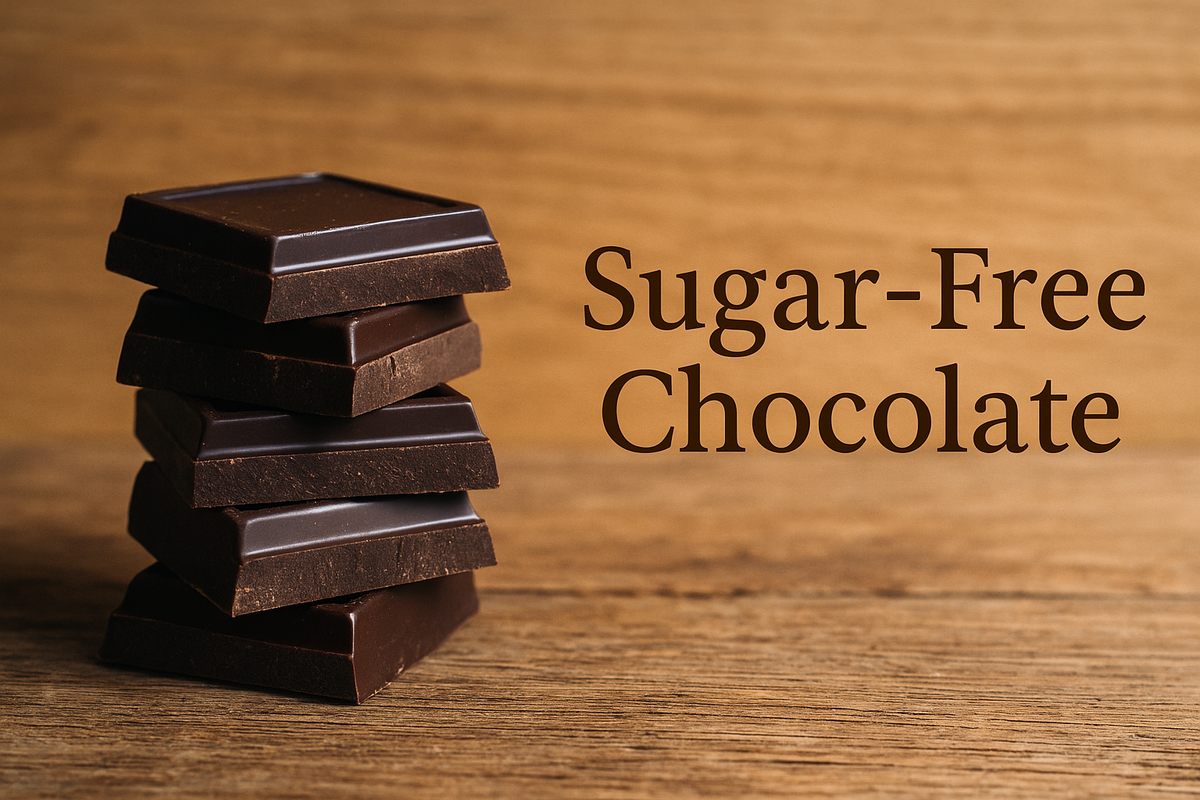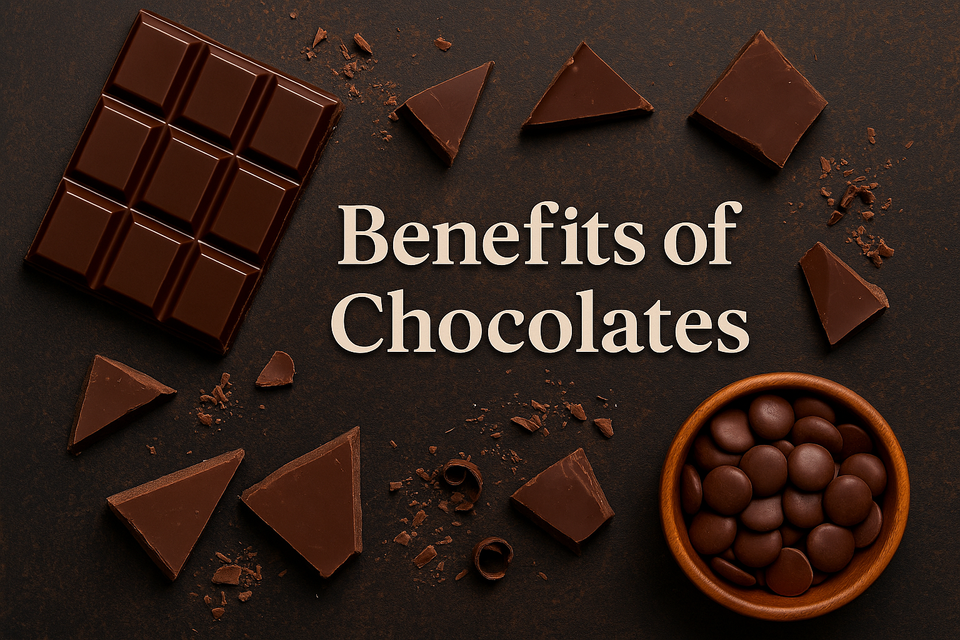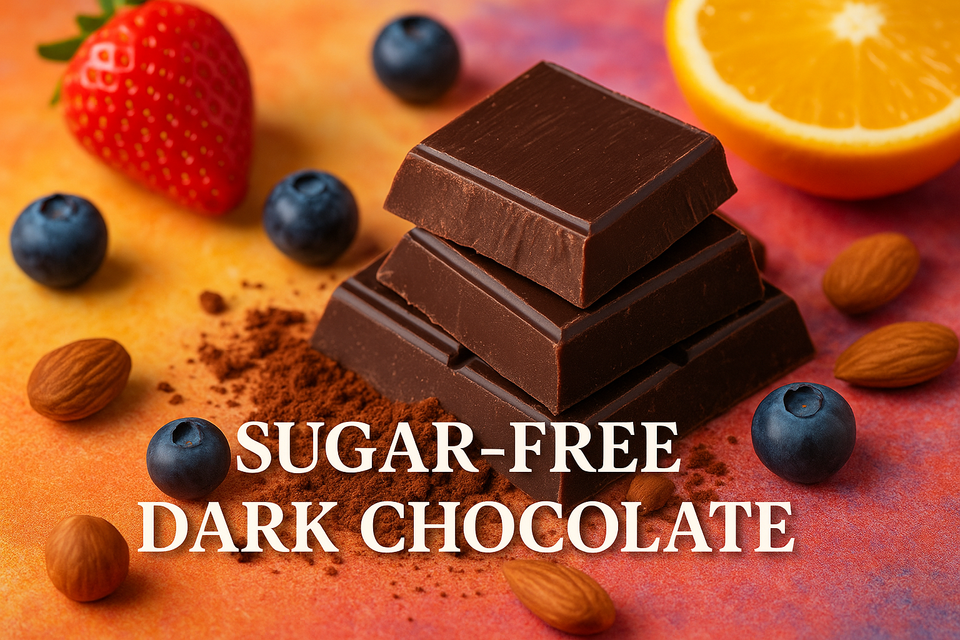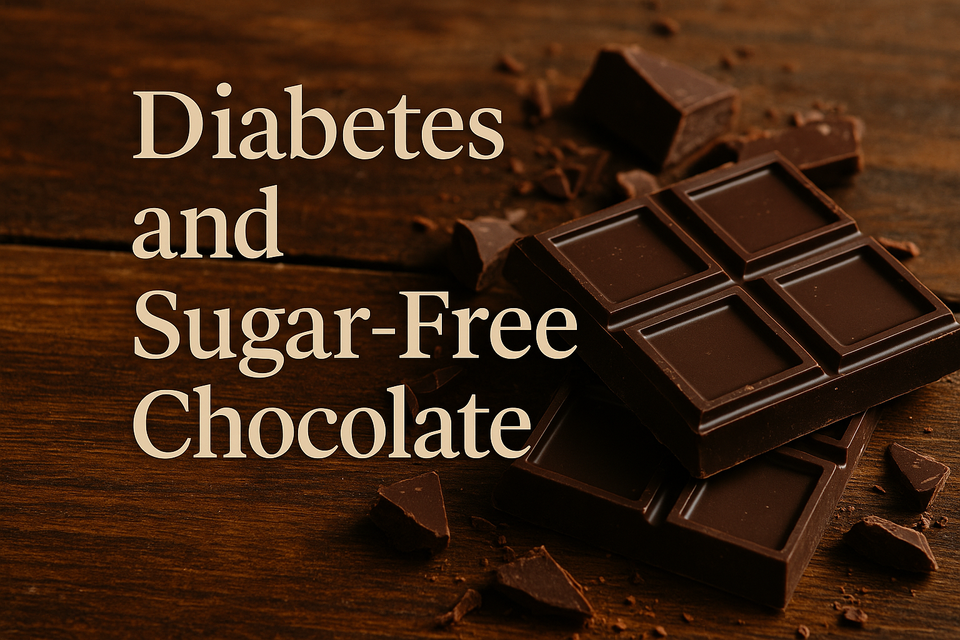Sugar-Free Chocolate 🍫 | The Sweet Truth About Guilt-Free Indulgence

Chocolate has long been considered a sweet, guilty pleasure. But what if you could indulge without the guilt? Say hello to sugar-free chocolate — a modern treat designed for those who want to enjoy the rich, velvety goodness of chocolate without the added sugars. 💡
In this comprehensive guide, we’ll explore what sugar-free chocolate is, how it’s made, its health benefits, and how it compares to traditional varieties. We’ll also highlight why sugar-free dark chocolate is becoming a popular option among health-conscious individuals and people with diabetes.
🍫 What is Sugar-Free Chocolate?
Sugar-free chocolate is exactly what it sounds like — chocolate made without traditional sugar. Instead, it uses natural or artificial sweeteners like:
- Stevia 🌿
- Erythritol
- Xylitol
- Maltitol
- Monk fruit extract 🍈
These alternatives provide sweetness without the calorie spikes or blood sugar crashes. That makes sugar-free chocolate a great option for people with diabetes, those on a keto diet, or anyone reducing their sugar intake.
💚 Why People Choose Sugar-Free Chocolate
There are many reasons people are making the switch to sugar-free chocolate:
- Health-conscious eating 🥗
- Weight management ⚖️
- Diabetes-friendly 🩺
- Better dental health 😁
- Balanced blood sugar levels 🔁
Sugar-free chocolate provides all the satisfaction of traditional chocolate, without the crash and cravings that follow high-sugar snacks.
🩺 Sugar-Free Dark Chocolate: A Game-Changer
Among all sugar-free options, sugar-free dark chocolate stands out as a powerhouse. It combines the robust, rich flavor of high-cocoa chocolate with the benefits of low glycemic sweeteners. 🌟
Top Benefits of Sugar-Free Dark Chocolate:
- ✅ Packed with antioxidants like flavonoids
- ✅ Supports heart health and blood circulation
- ✅ May help reduce inflammation
- ✅ Low impact on blood glucose levels
- ✅ Rich source of iron, magnesium, and fiber
Learn more about the benefits of dark chocolate and why it’s a smart choice for both body and brain. 🧠❤️
⚖️ How Sugar-Free Chocolate Compares to Regular Chocolate
| Aspect | Sugar-Free Chocolate | Regular Chocolate |
|---|---|---|
| Sweetener | Stevia, erythritol, etc. | White sugar, cane sugar |
| Calories | Lower | Higher |
| Blood Sugar Impact | Minimal | High |
| Suitable for Diabetics | Yes | No |
| Flavor | Balanced, less sweet | Sweeter, sometimes overpowering |
🍬 Who Should Eat Sugar-Free Chocolate?
Sugar-free chocolate is an excellent choice for:
- 👩⚕️ Diabetics
- 🏋️♂️ Fitness enthusiasts
- 🍽️ Keto/low-carb dieters
- 🦷 Dental care advocates
- 🎯 Anyone reducing sugar for health goals
It's important to read the label, though. Not all "sugar-free" chocolates are made equal. Check for quality ingredients and sweeteners that are safe and well-researched.
🍫 Popular Types of Sugar-Free Chocolate
- Sugar-free dark chocolate – High cocoa content, intense flavor
- Sugar-free milk chocolate – Creamier option with low-carb sweeteners
- Sugar-free chocolate chips – Ideal for baking and snacking
- Keto chocolate bars – Specifically made for ketogenic diets
🍩 Creative Ways to Use Sugar-Free Chocolate
- 🍪 Bake sugar-free brownies and cookies
- 🍓 Dip fruits like strawberries and bananas
- ☕ Stir into hot coffee or almond milk for a sugar-free mocha
- 🍫 Melt for low-carb chocolate fondue
- 🥜 Combine with nuts and seeds for healthy trail mix
📦 How to Store Sugar-Free Chocolate
Like regular chocolate, sugar-free varieties should be stored properly to retain flavor and texture:
- Keep in a cool, dry place (18–21°C or 64–70°F)
- Avoid exposure to sunlight or strong odors
- Refrigerate only if necessary, and store in an airtight container
❗ Things to Watch Out For
Although sugar-free chocolate is healthier, it’s important to be mindful of:
- ⚠️ Overconsumption — still contains fats and calories
- ⚠️ Sugar alcohols — may cause bloating in excess
- ⚠️ Low-quality brands — avoid those with artificial additives
🛒 How to Choose the Best Sugar-Free Chocolate
Here are a few quick tips to help you find the best options in stores or online:
- ✔️ Choose chocolates with 70% or higher cocoa
- ✔️ Check for natural sweeteners (e.g., stevia, monk fruit)
- ✔️ Avoid high levels of saturated fats or artificial ingredients
- ✔️ Read reviews and nutritional info before buying
🎯 Final Thoughts: Sweet Without the Sacrifice
Sugar-free chocolate offers a perfect balance between taste and health. Whether you’re managing diabetes, watching your weight, or simply reducing sugar for better well-being, it allows you to satisfy your cravings without compromising your goals. 🏆
Especially, sugar-free dark chocolate brings not only flavor but also incredible health benefits that traditional chocolates can’t always match. Read more about the benefits of dark chocolate and take your first step toward guilt-free indulgence. 🍫
✍️ Written by a chocolate lover, nutrition enthusiast, and lifestyle writer.
📢 Stay tuned for more guides on healthy treats and sweet swaps!





